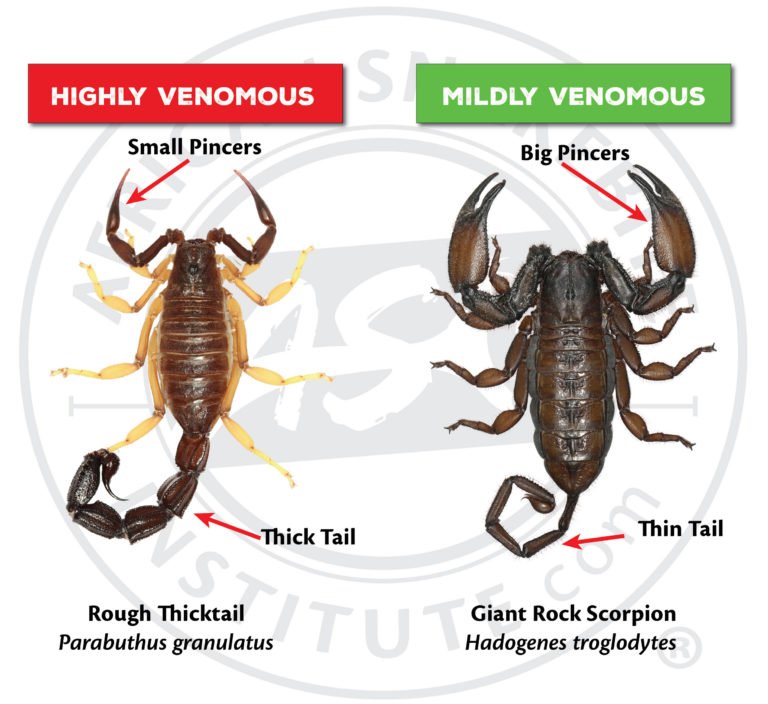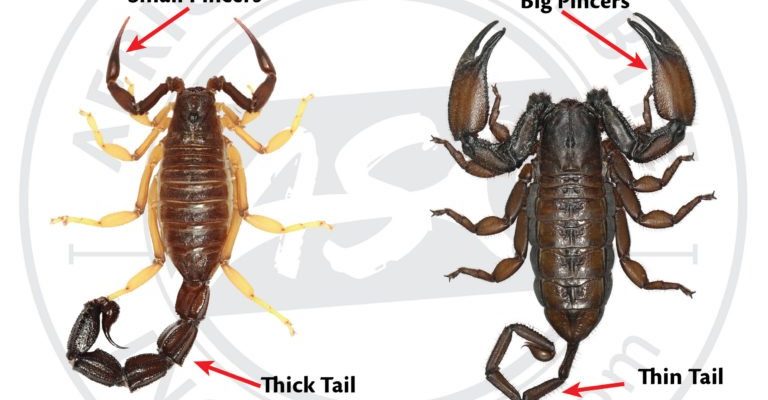
Determining whether a scorpion is venomous isn’t always straightforward. Just like how not every spider is a dangerous one, not every scorpion can deliver a life-threatening bite. In fact, most species are harmless, but there are a few that can cause severe reactions. Let’s dive into how to identify these tricky little guys, and I promise it’ll be more interesting than it sounds.
Understanding Scorpions
Before we jump into the venomous versus non-venomous debate, let’s get to know scorpions a bit better. These arachnids are part of the class *Arachnida*, which makes them relatives of spiders and ticks. They have eight legs, two pincers, and a segmented tail that usually ends in a stinger. It’s fascinating how they can adapt to various environments, from deserts to forests, making them truly resilient creatures.
Typically, scorpions prefer warm habitats and are mostly nocturnal, which means they come out at night. This behavior helps them avoid predators and hunt for prey. Speaking of prey, they primarily feed on insects and other small animals. Imagine a scorpion sneaking around a sandy landscape, ready to pounce on an unsuspecting bug. It’s quite a survival story!
Identifying Venomous Scorpions
So, let’s get to the crux of the matter: how to identify if a scorpion is venomous. The first thing to remember is that there are over 1,500 species of scorpions worldwide, but only about 30 species are known to have venom potent enough to be dangerous to humans. Here’s how you can spot them:
- Color and Size: While color isn’t a foolproof indicator, certain species tend to be larger and darker. For instance, the infamous Arizona bark scorpion, which is small and light-colored, is highly venomous.
- Tail Shape: Take a close look at the tail. Venomous scorpions often have tails that are more slender and flexible, which helps in delivering venom when they sting.
- Geographical Location: Knowing where you are can help, too. For example, the Androctonus species, found in Africa and the Middle East, are very venomous, while many others in the Americas are usually less harmful.
Here’s the thing: some scorpions that look harmless can deliver a painful sting, leading to swelling or discomfort. So, it’s essential to stay cautious regardless of appearances.
Common Venomous Species
In this section, let’s take a look at some well-known venomous scorpions that you might want to be aware of. Knowing which species to avoid can keep you out of harm’s way.
- Arizona Bark Scorpion: This is the most venomous scorpion in North America. They’re small, typically around 2-3 inches long, and can be found hiding under rocks or in houses. Their sting can cause severe pain and in rare cases, allergic reactions.
- Death Stalker Scorpion: Found in North Africa and the Middle East, this scorpion is about 3-4 inches long and has a very potent venom. Their sting is known to cause extreme pain, fever, and even heart symptoms in some people.
- Indian Red Scorpion: This species is notorious in India for its lethal venom. The sting can lead to significant morbidity and even death due to respiratory failure.
Understanding the risks associated with these species can help you stay safe. If you’re in their habitats, make sure to be extra cautious.
Signs of a Venomous Sting
If you’re ever unfortunate enough to get stung, recognizing the signs of a venomous sting is crucial. Here are the key symptoms to look out for:
- Pain: A sharp, burning pain at the sting site is often the first sign. This can intensify over time.
- Swelling: You might notice swelling around the area, which could last for several hours or even days.
- Systemic Reactions: In more serious cases, symptoms might extend beyond the site of the sting. This includes nausea, vomiting, increased heart rate, or difficulty breathing.
If you experience these symptoms, especially after a sting from a known venomous scorpion, it’s best to seek medical attention right away. Don’t wait around hoping it will get better!
First Aid for Scorpion Stings
Now, what should you do if you or someone else gets stung by a scorpion? It’s good to be prepared, so let’s cover some basic first aid steps:
1. Stay Calm: Keeping calm is crucial. Anxiety can increase heart rate and make the situation feel worse.
2. Clean the Area: Wash the sting site with soap and water. This helps prevent infection.
3. Ice the Sting: Apply ice to the area for 10-15 minutes to reduce swelling and pain. Just be sure not to put ice directly on the skin—wrap it in a cloth.
4. Pain Relief: Over-the-counter pain medications can help alleviate discomfort.
5. Seek Medical Attention: If you have any serious symptoms or if the sting was from a known venomous species, head to the hospital quickly.
It’s important to act fast, especially for children or anyone with allergies.
How to Avoid Venomous Scorpions
Now that you know how to identify and treat a scorpion sting, let’s talk about prevention. Here are a few tips to keep you safe from unwelcome encounters:
- Be Mindful of Your Environment: When hiking or camping, make sure to stick to well-trodden paths and avoid areas with heavy underbrush, as that’s where scorpions like to hide.
- Wear Protective Clothing: Long pants and sturdy boots can help shield you from potential stings, especially if you’re traversing rocky or sandy areas.
- Check Your Gear: Before putting on shoes or using equipment left outside, do a quick inspection. Scorpions can easily squeeze into places where you least expect them!
Honestly, a little bit of caution goes a long way in keeping you safe from these fascinating creatures.
Understanding how to tell if a scorpion is venomous can make a big difference in your outdoor adventures. Scorpions might be captivating, but they also command respect due to their potential danger. By knowing what to look for and how to react in case of a sting, you’ll feel more confident exploring areas where these arachnids roam.
So, next time you’re out and about, take a moment to appreciate the unique world of scorpions but remember to keep your distance whenever possible. With the right knowledge and precautions, you can enjoy nature without worrying too much about these enigmatic creatures!

